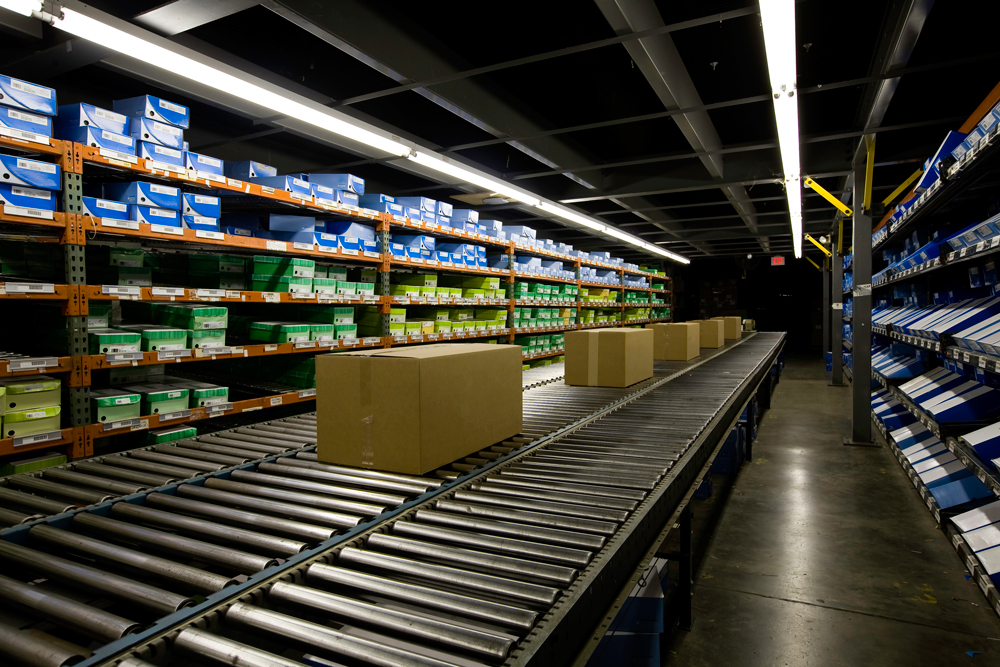Wasp Barcode Technologies: The Barcode Solution People
4 Simple Supply Chain Strategies That Will Cut Costs

Everyday millions of parts and products move around our vast globe, all moving along the massive supply chain that powers our economy. Monitoring your small piece of that global flow is critical to making sure your company can grow. For today’s small businesses, the supply chain can easily extend from China or India to Cincinnati and Indiana.
While the supply chain has gotten more complex, strategies and technology have made
monitoring your supply chain easier and more affordable than ever before. With new tools and insights, companies can make more informed supply chain decisions for more efficient inventory and asset management and increased profits.
[su_divider top="no" size="2"]
[su_divider top="no" size="2"]
The following four strategies will help you improve your supply chain’s efficiency and your company’s bottom line:
1. Achieve Supply Chain Visibility
The first step to supply chain efficiency is understanding your supply chain.
Achieving supply chain visibility means being able to track the flow of goods from your supplier to customer.
[Tweet "The first step to supply chain efficiency is understanding your supply chain."]
“Increasing competition, volatile energy and input costs, new technologies and supply chain visibility are all creating immediate challenges for organizations that, at the same time, are fighting to prepare for the launch of the
‘next wave’ of innovations.”
Keep up to date with new innovations so your company can use them to improve supply chain management. In the meantime, use existing technology and work with your vendors and manufacturers to establish systems that can track inventory from manufacturer to customer.
“Manufacturers are entering into partnerships and adopting new technologies in order to improve speed-to-market and lower innovation costs. Almost half say they are adopting new manufacturing technologies to drive innovation. In the short term, the 2015 GMO data implies that most manufacturers are focusing their technology spending on improving engineering, manufacturing and supply chain systems. ”
Take advantage of this trend by using new technology and inventory tracking systems to see how your inventory moves through your supply chain. Barcode technology can help you track inventory from the supplier to the customer. Many barcode inventory management systems track inventory in real-time giving you increased supply chain visibility and a better understanding of your inventory.
Tracking technology, like barcodes, can be used to monitor items from the manufacturer to point-of-sale, this info can help understand the way a product uses company resources at different stages of the supply chain and how quickly it moves.
2. Ensure Efficient Inventory Management and Flow
Efficient inventory management means carefully monitoring and managing the way inventory comes into your company and moves out of it. It is the scheduling of shipments, making plans for loading and unloading, ensuring storage space, and then moving items around within the store.
Inefficiencies in your inventory management can lead to big problems. Recently, Wal Mart's stock has stumbled and the company has faced customer complaints because it hasn’t been able to
keep products on the shelves. For smaller businesses, inefficient inventory flows mean wasted resources in storage and maintenance as well as missed opportunities for increased sales. If you are sitting on inventory that isn’t moving, you are spending money keeping it, and you don’t have space for new inventory that is selling.
Beyond just moving inventory in and out of your business, inventory moves within your business. From the stockroom to the sales floor, you are constantly reshuffling your inventory. This should be taken into account when you consider how to arrange inventory in your stockroom. Items that move quickly should be closer to where they go. Items that move less frequently can be kept farther away.
Other organizing principles like grouping similar items can be helpful as well.
Keep in mind all the ways inventory impacts your business so can optimize the flow and ensure maximum efficiency.
Consider inventory and capacity to ensure efficient inventory flow. Inventory can only move as quickly as you can move it, so make sure employee schedules, storage capacity, and inventory deliveries are carefully coordinated.

3. Monitor and Reduce Employee Theft
Employee theft cost retailers in the United States about $18 billion, accounting for 43% of lost revenue, according to the
latest Global Retail Theft Barometer. Employee theft is also a problem for non-retail businesses. In just one recent example, a former employee had
stolen as much as $400,000 from his employer.
At the heart of any fraud, including employee theft, is the
fraud triangle, perceived financial need, opportunity, and the ability to rationalize the behavior. There is no real way to prevent rationalization and perceived financial need (though we like to think that is what salary is for). However, you can do a lot to reduce opportunity and perceived opportunity for theft by using asset and inventory management technology and tools.
Using inventory and asset tracking software and barcodes can be a very effective way to head off employee theft. This means
you know where an item is, how it got there, and who had access to it last, among other data. When employees know you know this their perception of opportunity decreases along with their ability to get away unnoticed.
[su_divider top="no" size="2"]
Reduce employees’ perception of the opportunity for theft by using inventory tracking technology that ensures real-time information and monitoring.
[su_divider top="no" size="2"]
4. Use Cross-Functional Teams to Forecast For the Future
In inventory management forecasting means predicting purchase amounts, and effective forecasting can be a great tool for cutting costs along your supply chain. However, many companies rely on only inventory managers or purchasers to come up with their buying schedule and forecasting.
Cross functional teams that include marketing and sales as well as inventory managers and purchasers can reduce replenishment stock by 50% and, “ensure that the right products are available for big promotions,”
according to Bain and Company.
Don’t just monitor historical sales trends to forecast future needs. Make sure to consider company marketing plans and promotions, calendar events (like gift-giving holidays), and discount purchasing opportunities (like supplier sales or end of season wholesale discounts) when forecasting your future purchasing plans.
Today’s global supply chains extend longer and contain more links than ever before. At the same time, new tools and technology allow us to have a better understanding of our supply chain than ever before. Using the latest tools and strategy you can reduce supply chain friction and increase efficiency, saving your company money and improving your bottom line.




